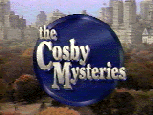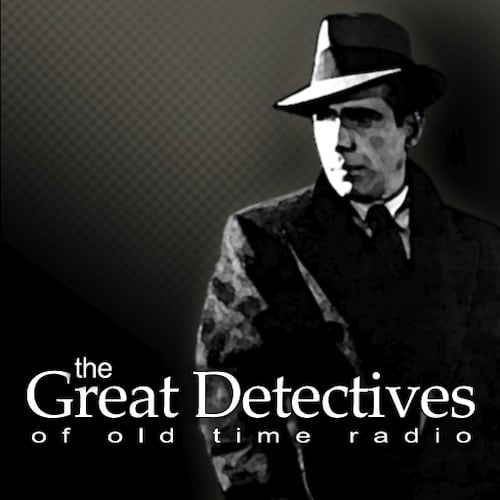Daniel over in the Dragnet Facebook page asked where I got my shows and what some of my favorites were. That was going to be a long answer, so I thought I’d make it a blog post.
First as to where to get the shows, here are four sites to try:
Archive.org Old Time Radio Collection
Calfkiller Old Time Radio
Radio Mick Danger
Tennessee Bill’s Old Time Radio Library
As to favorite shows, that’ll take a while. Let me go by categories:
Comedy:
If I want a good laugh, there are usually three shows I go for right away. Abbott and Costello are hilarious on the radio, even though they keep losing their place in their script they roll with the punches beautifully, their neo-Vaudeville jokes are hilarious and Lou Costello’s timing is dead on, plus they have fantastic guest stars including Bugs Bunny!
Bob Hope is fantastic as well. I didn’t watch too much of Hope’s older stuff growing up, but now that I’m older I’ve got a stronger appreciation of his style. Hope doesn’t give all the funny lines himself, but his guest’s material was written very well, so whether its Basil Rathbone, Jack Webb, or Chico Marx as his guest star, it’s a fanastic show.
I also like Life with Luigi. I actually heard about the show during a commercial break on Yours Truly Johnny Dollar and then listened to the show as a curiosity. It’s a very sweet comedy focusing on the little immigrant, Luigi and his struggles with life in America. A wonderful cast of characters and a beautiful show.
I also appreciate Fibber McGee and Molly and the Great Gildersleeve.
Detective Shows:
I have a list of all the Detective Shows I like and want to do. It’s pretty exhaustive. Picking favorites is hard, but here goes.
Dragnet was unique because it really combined the police procedural with real detective stories. It was truly a mystery show where we followed the law and solved the case with them. S.S. Van Dine once couselled detective story writers, “No lesser crime than murder will suffice.” Webb managed to create human drama out of burglaries and passing bad checks, a tough feat to accomplish.
Let George Do It is truly an underrated prorgram. It managed to really create a unique character and story that defies people’s usual hard-boiled/soft-boiled division of detectives. Clearly George Valentine had elements of both. The mysteries were ususally cleverly written and the acting by Bob Bailey was superb.
Pat Novak for Hire with Jack Webb was truly one of the most unique shows on radio. Pretty edgy for its time, but they delivered more great lines than a Shakespearean Actor in a one man play. Had Jack Webb not done Dragnet, he may have seen some more limited stardom on this show.
I also have to say I’ve become a fan of Yours Truly Johnny Dollar with its exotic locales, and its unique perspective of an insurance investigator as the protagonist make for a compelling story. Johnny Dollar is the ultimate troubleshooter and with over 700+ adventures in circulation, there seems to be an almost never-ending supply of action, adventure, and mystery. I really like the Russell, O’Brien, and Bailey versions of the character. I haven’t heard enough of Mandel Kramer and Bob Readick to make a judgment, and John Lund either (though Lund seems to be everyone’s least favorite Johnny Dollar.)
I didn’t linitially like Barrie Craig, Confidential Investigatorbecause of his identifying his job as a confidential policeman who could make arrests, but then I realized that was Gargan tweaking a genre that didn’t exactly treat things realistically. He’s the easiest going, sweetest private detective around who always believes his clients. Conversely, if you cross him, he’ll set you down quick. The show plays with the genre in a fun way.
Philip Marlowe with Gerald Mohr may just be the most perfect detective show ever made. Marlowe is a good man dealing in a world full of rough and dishonest ones with an impeccable sense of integrity. Mohr delivers Marlowe’s lines with a real sense of authority. More than any other adaptor of Marlowe, Mohr brings Marlowe to life. The beginnings of the show are iconic, “Get this and get it straight. Crime is a sucker’s road and those who travel it wind up in the gutter, the prison or the grave. There’s no other way, but they never learn.” And then Marlowe would tease the episode in a way that would intrigue so much you wouldn’t dare change the dial, “When it started, a girl’s wedding and New Year’s Eve were only six hours away. And I didn’t think the bride-to-be would make either one of them. But that was before I ran up against a slot machine operator, the escaped convict, and above all, the old acquaintance.”
Boston Blackie. There are nearly 200 episodes of this show in circulation, and it’s no wonder why. Blackie is a clever former crook turned ameature detective. He’s hunted by Inspector Farraday of Homicide who always blames crimes on Boston Blackie at first. One of the most unique things about the Ziv Transcription run of Boston Blackie was that the relationship between Farraday and Blackie changed over time into an actual friendship.
Broadway is My Beat: “from Times Square to Columbus Circle, the gaudiest, most violent, and lonesomest mile in the world.” A great story about New York Police Lieutenant Danny Clover as he solves murders for the NYPD. There’s a great sense of poetry to the show that’s remarkable.
Drama
Family Theater is a huge favorite with great stories that truly touch the heart. Their uplifting and inspirational with great stars such as Bing Crosby, Jimmy Stewart, and Don Ameche coming on to do plays like “God and the Red Scooter” and “I Give You Maggie.”
Cavalcade of America is a wonderful show about American history and values. They bring great stories to life. It’s truly educational. You could plug your kid into the 700 + episodes of Cavalcade of America circulating out there and they’d learn more about American history than is taught in schools these days.
The Shadow: I love the Shadow particularly the Orson Welles version. I think those early Orson Welles versions really are templates for everything that Superhero fiction became in its golden age. The later shows were okay, but not as good. Some of them got into too much horror, and we could be 20 minutes into the Episode sometimes before The Shadow made his appearance or disapperance, I guess. But, it’s still a classic.
Mayor of the Town is a classic show of small town life and public service starring Lionel Barrymore and Agnes Moorhead. I wrote about it in some detail here.
I Was a Communist for the FBI is gripping cold war spy drama done by Dana Andrews, and again a little bit of a tone of lament in it. “I’m a Communist for the FBI. I walk alone.”
You Are There: Another great show from CBS. This one was a news show that provided news-style coverage of historical events such as the signing of the Declaration of Independence and the Assassination of Lincoln. I actually was in tears listening to the Lincoln drama. It was so affecting, that I felt strangely like it were happening live. My wife asked me what was wrong. I said, “The President’s been shot.” I clarified. “Not Obama, Lincoln.” Dennis at the Digital Deli has a nice definitive log that arranges the episodes in historical order.
Horatio Hornblower: I like this show, though I don’t quite know why. The narratives are narrated by Horatio as an old man retirement who is remembering all of his adventures out of chronological order. Horatio himself is filled with self-doubts and insecurities. And he does some dreadful things. Still, once you get to the actual action, it’s a remarkable show with some great adventures.
Ava Maria Hour’s Life of Christ: While I’m not Catholic, I do truly appreciate the Ava Maria Hour’s treatment of the life of Christ. First of all, it was a 44-part series which shows they took the time to really tell the story in depth. The dialogue was clearly written by scholars, but scholars with a good sense of story. To understand the story of Christ, you have to understand the times and the places in which he lived, and they worked a lot of background into the story in ways that were interesting and non-intrusive.
I also have a special place in my heart for Lux Radio Theater, Screen Director’s Playhouse, and The Screen Guild Theater, three shows that brought movies to the radio. It’s a challenge, and I think that Lux usually rose to the challenge quite well, as they had about an hour, as did Screen Director’s Playhouse towards the end. With Screen Guild Theater, we tended to get more a selection of scenes from the story rather than a complete story. Still, if the scenes include Bogart as Sam Spade or Rick in Casablanca, I’d say its a pretty special show.
These are just a few of my favorities. The wonderful thing about radio is that it seems like there always more shows to discover, always more stories to hear, and I’m certain I’ll find more favorites as time goes by.

